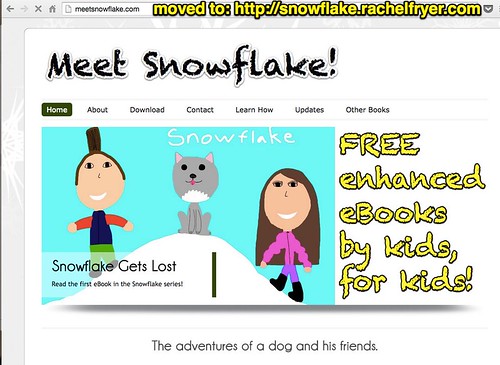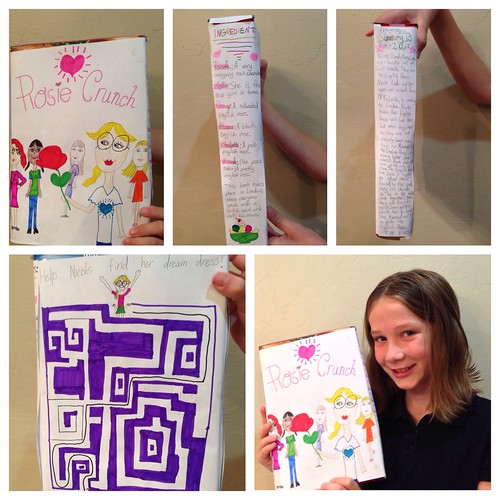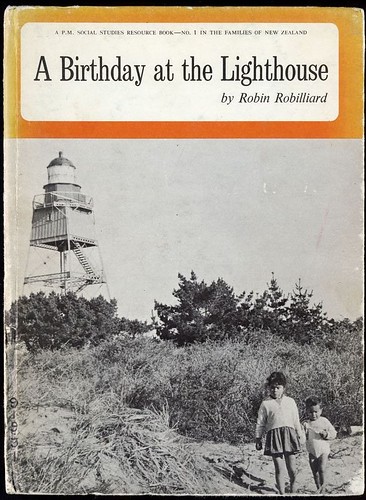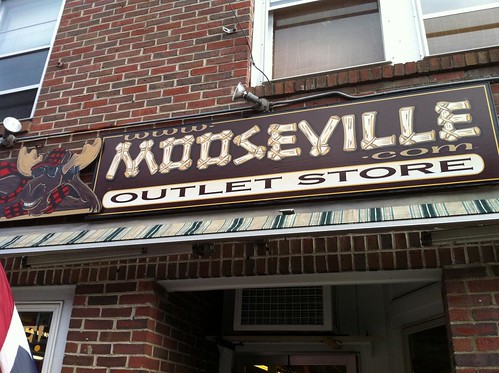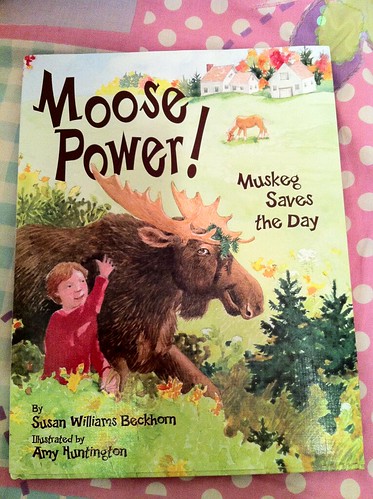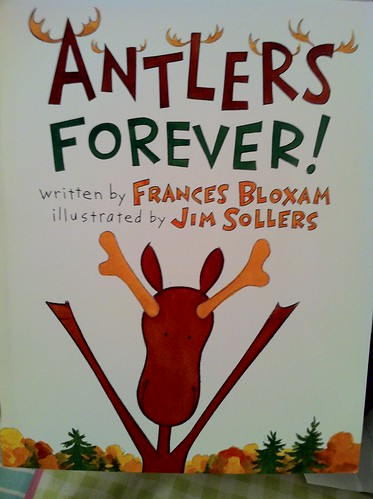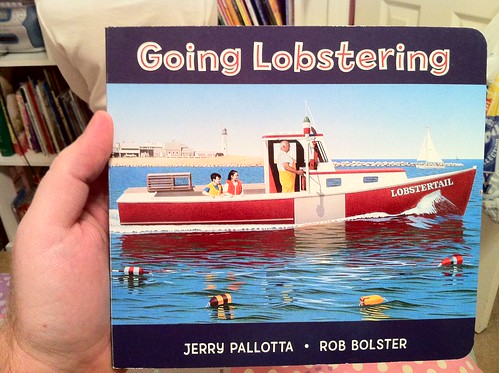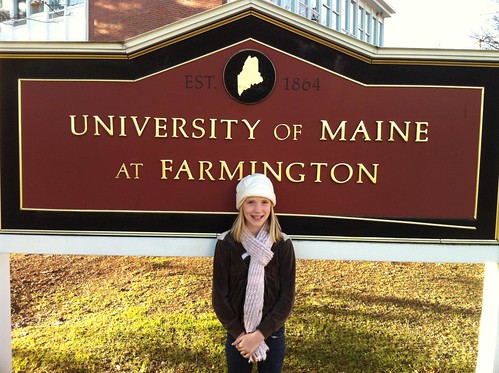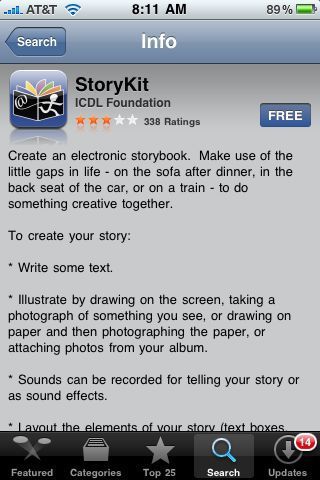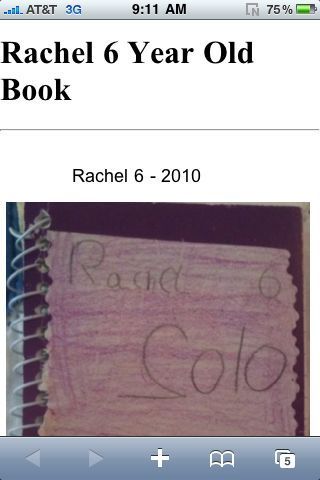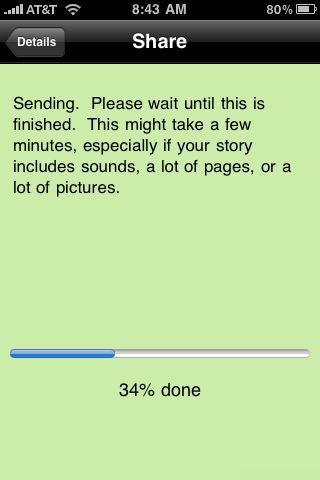Racial Justice and Healing: Resources from Front Royal, Virginia
Today Rachel, Shelly and I attended worship at Cavalry Episcopal Church in Front Royal, Virginia. Today is Pentecost, and after the wonderful service the congregation hosted a celebratory coffee and snack time featuring (predominantly) red cakes, pies, and other goodies! Cavalry Episcopal has been Rachel’s church home the past year as she’s been studying on a Falcon Scholarship at Randolph Macon Academy, just up the street from the church. In a month Rachel is headed to the US Air Force Academy for Basic Cadet Training, as a member of the USAFA Class of 2027. In this post, I’d like to share some of the fantastic resources we learned about in our conversations with Reverend Valerie Hayes, who is the rector at Cavalry Episcopal. These resources relate broadly to the themes of seeking empathy and understanding in our politically polarized times, finding ways to discuss and explore our shared history which was (and still is) strongly influenced by racism and discrimination, and seeking to both love and share the love of Jesus Christ in our communities often fixated on “culture war” issues based more in fear and judgement rather than the fruits of God’s Holy Spirit. I’m sharing these resources because I want to remember and revisit them myself, and I am also positive there are others in our church family back in Charlotte (as well as elsewhere) who are interested in these topics as we each venture forward on our own journeys of faith seeking to follow Jesus.

Reverend Hayes mentioned several books in her courageous and challenging homily in today’s worship service, particularly as she shared about the “Triangle of Hope Youth Pilgrimage.”
The Triangle of Hope is an Anglican-led effort to form covenantal community between the dioceses of Liverpool (England), Kumasi (Ghana), and Virginia dedicated to transforming the long history, ongoing effects and continuing presence of slavery in our world through repentance, reconciliation and mission.Each one of our Dioceses was directly involved in the dreadful Slave Triangle. We remember and acknowledge with sorrow that human beings were captured and enslaved for financial gain with no regard for their dignity and humanity. We view this history with great pain and in penitence before God, the God who wills in Christ to bring freedom and justice for all.
This is a courageous and absolutely WONDERFUL initiative I want to learn more about. In exploring the project website, don’t miss the videos on the “Tsedaqah” page, including the video, “Explore the Way of Love: Go.” I agree with the thesis of this video: Jesus calls us today to move outside our comfort zones in love and humility, as we seek to live like Jesus and share the transformative message of his Gospel which is filled with love, grace, empathy, understanding, listening, and faith.
This mandate to GO includes finding ways to discuss and explore culturally sensitive issues, like the history of the transatlantic slave trade and the ongoing, multi-generational impact of this sinful economic system.
The first of the books shared today by Rev Hayes was “Stamped from the Beginning: The Definitive History of Racist Ideas in America” by Ibram X. Kendi. According to the current English WikiPedia entry for the book:
Stamped from the Beginning: The Definitive History of Racist Ideas in America is a non-fiction book about race in the United States by the American historian Ibram X. Kendi, published April 12, 2016 by Bold Type Books, an imprint of PublicAffairs. The book won the National Book Award for Nonfiction.[1][2][3]
The book also has two “remixes” for children, Stamped: Racism, Antiracism, and You and Stamped (For Teens ): Racism, Antiracism, and You. A graphic novel version, adapted and illustrated by Joel Christian Gill, is expected to be published in June 2023.
The teen version is used as a study text by the Triangle of Hope Youth Pilgrimage teams.
A second book she mentioned and recommended in her homily was “Becoming Human: The Holy Spirit and the Rhetoric of Race” by Luke A. Powery. The Amazon website description of the book is:
Discussions of racial difference always embody a story. The dominant story told in our society about race has many components, but two stand out: (1) racial difference is an essential characteristic, fully determining individual and group identity; and (2) racial difference means that some bodies are less human than others.
The church knows another story, says Luke Powery, if it would remember it. That story says that the diversity of human bodies is one of the gifts of the Spirit. That story’s decisive chapter comes at Pentecost, when the Spirt embraces all bodies, all flesh, all tongues. In that story, different kinds of materiality and embodiment are strengths to be celebrated rather than inconvenient facts to be ignored or feared. In this book, Powery urges the church to live up to the inclusive story of Pentecost in its life of worship and ministry. He reviews ways that a theology and practice of preaching can more fully exemplify the diversity of gifts God gives to the church. He concludes by entering into a conversation with the work of Howard Thurman on doing ministry to and with humanity in the light of the work of the Spirit.
In this book description, you can see the connection which Rev Hayes made to Pentecost in her homily. I TOTALLY resonate with this idea, that we need to both “lean into” and embrace the beauty, power, and goodness of diversity which we see reflected in our shared humanity across our globe, as well as in our natural world. I talked about this last week in episode 15 of the weekly podcast Shelly and I are now recording, which we shared from the North Carolina Zoo in Asheboro.
These ideas and this approach to our society today is a very “counter-cultural message”, amidst so much focus on “culture war” issues and political candidates. Yet I think this is one of many things we need to be doing as followers of Jesus Christ, regardless of our current denominational affiliation, background or context.
After church when we had an opportunity to visit at length with Rev Hayes, she shared a wealth of other resources related to the themes of her homily and the overall goals of racial justice and healing, which are major goals in their Episcopal Diocese here in Virginia. These included “Sacred Ground: A Film-Based Dialogue Series on Race & Faith” by the Episcopal Church. According to the website:
Sacred Ground is a film- and readings-based dialogue series on race, grounded in faith. Small groups are invited to walk through chapters of America’s history of race and racism, while weaving in threads of family story, economic class, and political and regional identity.
The 11-part series is built around a powerful online curriculum of documentary films and readings that focus on Indigenous, Black, Latino, and Asian/Pacific American histories as they intersect with European American histories.
Sacred Ground is part of Becoming Beloved Community, The Episcopal Church’s long-term commitment to racial healing, reconciliation, and justice in our personal lives, our ministries, and our society. This series is open to all, and especially designed to help white people talk with other white people. Participants are invited to peel away the layers that have contributed to the challenges and divides of the present day – all while grounded in our call to faith, hope and love.
This is a 4.5 minute video from Episcopal Christians in Cody, Wyoming (where coincidentally my 95 year old aunt, Marge Wilder, and family live!) sharing some background about the “Sacred Ground” film and dialog series. I would love to participate in this study back in North Carolina!
Another related book Rev Hayes recommended today is “Slavery by Another Name: The Re-Enslavement of Black Americans from the Civil War to World War II” by Douglas A. Blackmon. The Amazon description is:
This groundbreaking historical expose unearths the lost stories of enslaved persons and their descendants who journeyed into freedom after the Emancipation Proclamation and then back into the shadow of involuntary servitude shortly thereafter in “The Age of Neoslavery.”
By turns moving, sobering, and shocking, this unprecedented Pulitzer Prize-winning account reveals the stories of those who fought unsuccessfully against the re-emergence of human labor trafficking, the companies that profited most from neoslavery, and the insidious legacy of racism that reverberates today.
Following the Emancipation Proclamation, convicts—mostly black men—were “leased” through forced labor camps operated by state and federal governments. Using a vast record of original documents and personal narratives, Douglas A. Blackmon brings to light one of the most shameful chapters in American history.
This book, and others like it which highlight our shared history of racism and racial discrimination, represent perspectives from and about history which many adults living today did not study or encounter during their years of formal schooling. It is important work for us, together, to seek to better understand our own history, especially as we seek to understand the experiences and perspectives of our brothers and sisters of color who have faced (and continue to face) so many hardships and persecutions. It is lamentable that some prominent politicians today (Ron DeSantis comes to mind, but there are others) are pushing an agenda which seeks to silence, marginalize, and/or deny the validity of perspectives on history of many folks, including African-Americans. As I’ve learned vividly through my ongoing work in the “Conspiracies and Culture Wars” media literacy project, just talking about these issues with others (either in-person or online) can be perilous and challenging. However, specifically as Christians and followers of Jesus Christ, “we are called to do hard things.” At a very basic level, this includes seeking opportunities to engage in mutual DIALOG about these issues touching on race, racism, and social justice.
Steven Charleston is the author of “The Four Vision Quests of Jesus,” which I learned about and read last year thanks to the recommendation of Curt Gruel, my spiritual director. In our discussions with Rev Hayes today, we talked a little about the Native American Ministry of The Episcopal Diocese of Virginia, Our primary Episcopal Church home in Oklahoma City, St Augustine’s of Canterbury, sent a youth mission team to a Navajo reservation in Arizona during Spring Break 2022. I mentioned Charleston’s “Vision Quests of Jesus” book today to Rev Hayes, and she let me know he now has a newer (2021 imprint) book, “Ladder to the Light: An Indigenous Elder’s Meditations on Hope and Courage.” I’ve added this book to my Amazon reading wish list.
In discussing Native American connections to Christianity, faith and spirituality, Rev Hayes also recommended the book “The First Signs: Unlocking the Mysteries of the World’s Oldest Symbols” by Genevieve von Petzinger. As a student of history as well as teacher about media literacy and visual communication, this sounds like an excellent read. This reminds me of the Utah petroglyph “Newspaper Rock,” which I integrated into the website header image for “Show With Media: What Do You Want to CREATE Today?” I’ve also added this to my future reading list!
Unfortunately, gun related violence is closely tied to conversations today about political polarization and our ongoing culture war. Later in June, different church and other groups in Fort Royal are planning a shared event to promote gun safety awareness and (I expect) new gun regulation to try and reduce levels of firearm violence in our nation. Rev Hayes mentioned this in her closing announcements during today’s worship service. On this topic, we also shared a couple resources today.
I mentioned the outstanding TEDx talk by former firearms executive, Ryan Busse, “It’s Time For Responsible Gun Owners to Save our Democracy.” This is the best video I have seen to date on the issues of gun related violence, and the unfortunate ways millions of people in the United States have tied their IDENTITIES to tactical firearms like the AR-15. I share this as a gun owner, hunter and sportsman myself, as well as military veteran. I am personally NOT anti-gun, but agree with Ryan Busse that none of us should define our identities by our love and passion for tactical firearms. As a follower of Jesus Christ, I know that my identity should be rooted in HIM, not in things or possessions. This is a great TEDx talk, and if you haven’t watched it, I encourage you to take time to now or later. (Add it to your YouTube “watch later” playlist!)
Rev Hayes shared a documentary about gun culture and Christian faith in the United States I haven’t seen and hadn’t heard about previously, “The Armor of Light” documentary from 2015. More information and links about it are available on the film’s official website as well as from PBS. According to the PBS website:
The Armor of Light follows the journey of Evangelical minister Rob Schenck, who is trying to find the courage to preach about the growing toll of gun violence in America, and Lucy McBath, the mother of an unarmed teenager who was murdered in Florida and whose story cast a spotlight on the state’s “Stand Your Ground” laws.
Reverend Schenck, a well-known anti-abortion activist and long-time fixture on the political far right, breaks with orthodoxy by questioning whether being pro-gun is consistent with being pro-life. In a series of uneasy conversations, Rev. Schenck is perplexed by the reactions of his friends and colleagues, most of whom are gun owners and adamant defenders of the 2nd Amendment, and who warn him away from this complex, politically explosive issue. Along the way, he meets Lucy McBath, also an Evangelical Christian, who decides to work with him. Lucy is on a difficult journey of her own, trying to make sense of the devastating loss of her murdered son, while using her grief to effect some kind of viable and effective political action where so many before her have failed.
The Armor of Light follows these allies through their trials of conscience, heartbreak, and rejection, as they bravely attempt to make others consider America’s gun culture through a moral lens. The film is also a glimpse at America’s fractured political culture while demonstrating that it is, indeed, possible for people to come together across deep party lines to find common ground.
I have not yet watched this documentary but, as with the books referenced in this post, am adding it to my “watch list” / “read list” for the future.
The book “The Sum of Us: What Racism Costs Everyone and How We Can Prosper Together” by Heather McGhee was also recommended today by Rev Hayes. According to Amazon:
Heather McGhee’s specialty is the American economy—and the mystery of why it so often fails the American public. From the financial crisis of 2008 to rising student debt to collapsing public infrastructure, she found a root problem: racism in our politics and policymaking. But not just in the most obvious indignities for people of color. Racism has costs for white people, too. It is the common denominator of our most vexing public problems, the core dysfunction of our democracy and constitutive of the spiritual and moral crises that grip us all. But how did this happen? And is there a way out?
McGhee embarks on a deeply personal journey across the country from Maine to Mississippi to California, tallying what we lose when we buy into the zero-sum paradigm—the idea that progress for some of us must come at the expense of others. Along the way, she meets white people who confide in her about losing their homes, their dreams, and their shot at better jobs to the toxic mix of American racism and greed. This is the story of how public goods in this country—from parks and pools to functioning schools—have become private luxuries; of how unions collapsed, wages stagnated, and inequality increased; and of how this country, unique among the world’s advanced economies, has thwarted universal healthcare.
But in unlikely places of worship and work, McGhee finds proof of what she calls the Solidarity Dividend: the benefits we gain when people come together across race to accomplish what we simply can’t do on our own. The Sum of Us is not only a brilliant analysis of how we arrived here but also a heartfelt message, delivered with startling empathy, from a black woman to a multiracial America. It leaves us with a new vision for a future in which we finally realize that life can be more than a zero-sum game.
This sounds like it should go on the “required reading list” for anyone today interested in better understanding where we’ve come from and how we can move forward together on the primary topics of this blog post: Racial Justice and Healing.
Today Rev Hayes also recommended the book, “The Hidden Wound” by Wendell Berry. According to Amazon:
An impassioned, thoughtful, and fearless essay on the effects of racism on the American identity by one of our country’s most humane literary voices.
Acclaimed as “one of the most humane, honest, liberating works of our time” (The Village Voice), The Hidden Wound is a book-length essay about racism and the damage it has done to the identity of our country. Through Berry’s personal experience, he explains how remaining passive in the face of the struggle of racism further corrodes America’s great potential. In a quiet and observant manner, Berry opens up about how his attempt to discuss racism is rooted in the hope that someday the historical wound will begin to heal. Pulitzer prize-winning author Larry McMurtry calls this “a profound, passionate, crucial piece of writing . . . Few readers, and I think, no writers will be able to read it without a small pulse of triumph at the temples: the strange, almost communal sense of triumph one feels when someone has written truly well . . . The statement it makes is intricate and beautiful, sad but strong.”
Rev Hayes shared a little with us today about the courageous and inspirational project, “Coming to the Table.” According to the organization’s About page, their mission and vision is:
Vision: The Coming to the Table vision for the United States is of a just and truthful society that acknowledges and seeks to heal from the racial wounds of the past—from slavery and the many forms of racism it spawned.
Mission: Coming to the Table provides leadership, resources, and a supportive environment for all who wish to acknowledge and heal wounds from racism that is rooted in the United States’ history of slavery.
The 3 minute video from 2020, “Healing Wounds,” which was shared on the “Coming to the Table” YouTube channel, provides a succinct overview of some of the work of this organization. I resonate deeply with this, and want to continue developing and sharing resources through the “Storychasers” passion project to empower others to find racial healing through the power of digital storytelling.
One possible source for digital stories as well as personal, family geneological research mentioned by Rev Hayes today are the slave census documents available from the 1840s and 1850s. Some of these documents reveal the historic connections which families have to slavery. The 2008 PBS “Traces of the Trade” documentary is an example of a film / digital story created by someone making these kinds of personal, historic connections to the slave trade of the past. Commercially licensed streaming versions of the film are available on Vimeo.
The book, “The Little Book of Racial Healing: Coming to the Table for Truth-Telling, Liberation, and Transformation (Justice and Peacebuilding)” by Thomas Norman DeWolf is a related book which shares the format and strategy of “Coming to the Table.” I’m thinking about this as the basis for future Storychaser workshops, offered both in-person and online. According to Amazon:
This book introduces Coming to the Table’s approach to a continuously evolving set of purposeful theories, ideas, experiments, guidelines, and intentions, all dedicated to facilitating racial healing and transformation.
People of color, relative to white people, fall on the negative side of virtually all measurable social indicators. The “living wound” is seen in the significant disparities in average household wealth, unemployment and poverty rates, infant mortality rates, access to healthcare and life expectancy, education, housing, and treatment within, and by, the criminal justice system.
Coming to the Table (CTTT) was born in 2006 when two dozen descendants from both sides of the system of enslavement gathered together at Eastern Mennonite University (EMU), in collaboration with the Center for Justice & Peacebuilding (CJP). Stories were shared and friendships began. The participants began to envision a more connected and truthful world that would address the unresolved and persistent effects of the historic institution of slavery. This Little Book shares Coming to the Table’s vision for the United States—a vision of a just and truthful society that acknowledges and seeks to heal from the racial wounds of the past. Readers will learn practical skills for better listening; discover tips for building authentic, accountable relationships; and will find specific and varied ideas for taking action.
Betty Kilby Baldwin’s book, “Cousins: Connected through slavery, a Black woman and a White woman discover their past—and each other” is another example of a racial healing project like this, which connects people to their historic family ties to slavery. (Rev Hayes also shared this today.)
A final book related to these themes shared by Rev Hayes today was “The Color of Compromise: The Truth about the American Church’s Complicity in Racism” by Jimar Tisby. According to Amazon:
An acclaimed, timely narrative of how people of faith have historically–up to the present day–worked against racial justice. And a call for urgent action by all Christians today in response.
The Color of Compromise is both enlightening and compelling, telling a history we either ignore or just don’t know. Equal parts painful and inspirational, it details how the American church has helped create and maintain racist ideas and practices. You will be guided in thinking through concrete solutions for improved race relations and a racially inclusive church.
The Color of Compromise:
- Takes you on a historical, sociological, and religious journey: from America’s early colonial days through slavery and the Civil War
- Covers the tragedy of Jim Crow laws, the victories of the Civil Rights era, and the strides of today’s Black Lives Matter movement
- Reveals the cultural and institutional tables we have to flip in order to bring about meaningful integration
- Charts a path forward to replace established patterns and systems of complicity with bold, courageous, immediate action
- Is a perfect book for pastors and other faith leaders, students, non-students, book clubs, small group studies, history lovers, and all lifelong learners
The Color of Compromise is not a call to shame or a platform to blame white evangelical Christians. It is a call from a place of love and desire to fight for a more racially unified church that no longer compromises what the Bible teaches about human dignity and equality. A call that challenges black and white Christians alike to standup now and begin implementing the concrete ways Tisby outlines, all for a more equitable and inclusive environment among God’s people. Starting today.
All forms of media and expressions of “the arts” have potential to play constructive roles in our individual and collective journeys of healing, when it comes to social justice and racism. The Selah Theatre Project of Winchester, Virginia, was a final organization shared by Rev Hayes today as playing a positive, constructive role in encouraging community dialog around the different issues related to racial healing. According to the about page of the Selah Theatre Project :
VISION:
Our vision is to enlighten, empower, and unite people through the arts to build a stronger, kinder, and more creative community.MISSION:
We believe that theatre is an impactful artistic medium that encourages reflection and conversation. Our mission is to bring diversified community voices to the stage, encouraging audiences to “pause and think”.
So many wonderful books, projects, films and organizations here! We are deeply indebted to Reverend Valerie Hayes and the congregation of Cavalry Episcopal Church in Front Royal, Virginia, for the love and care they have shared this past year with our daughter, Rachel. My wife and I are also deeply appreciative to Rev Hayes for taking the time to visit with us today after church, and share such a wonderful wealth of resources, stories, and ideas relating to social justice and racial reconciliation!
It is inspiring and wonderful to learn about so many other people working with parallel purpose to promote racial healing and social justice in our nation and world. By sharing this blog post, I’m hoping the “long tail” of the Internet will meet more manifestations of “The Fruits of God’s Holy Spirit” in our individual lives and communities.
(I also cross-posted this to Medium.)

